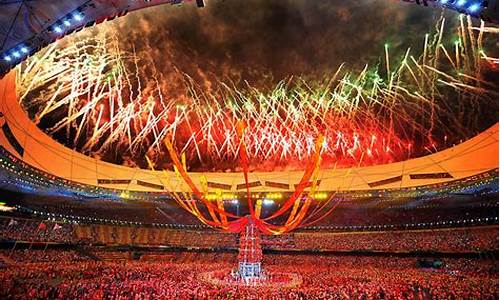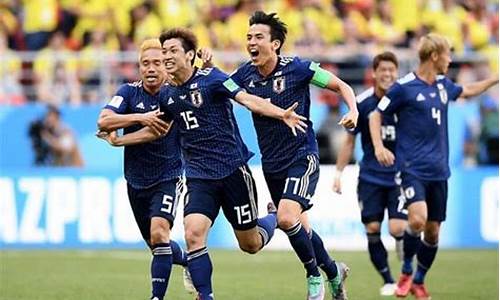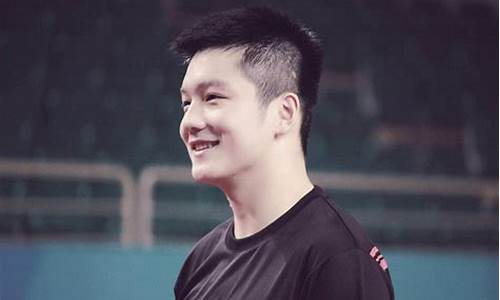您现在的位置是: 首页 > 足球比赛 足球比赛
北京奥运会简介英文版_北京奥运会英文版介绍
tamoadmin 2024-09-03 人已围观
简介1.要一篇七年级学生能看懂的,北京奥运会的中英文介绍2.北京奥运会介绍与项目介绍(中英文都要)3.08奥运会历史4.2008北京奥运会相关知识的英文介绍,如建筑、开幕式等等5.急需用英文介绍有关2088年北京奥运会的场馆的文章。大约300-400字6.用英文介绍一下奥运会在人类历史发展的长河中,除了宗教这一古老的社会文化现象外,奥林匹克运动可以称得上是一个历史最为悠久的社会文化现象。奥林匹克运动的
1.要一篇七年级学生能看懂的,北京奥运会的中英文介绍
2.北京奥运会介绍与项目介绍(中英文都要)
3.08奥运会历史
4.2008北京奥运会相关知识的英文介绍,如建筑、开幕式等等
5.急需用英文介绍有关2088年北京奥运会的场馆的文章。大约300-400字
6.用英文介绍一下奥运会

在人类历史发展的长河中,除了宗教这一古老的社会文化现象外,奥林匹克运动可以称得上是一个历史最为悠久的社会文化现象。奥林匹克运动的起源从有文字记载的历史可以追溯到公元前776年。但在此以前,古奥运会可能已经存在了几个世纪。奥林匹克运动会简称“奥运会”,是由国际奥林匹克委员会主办的世界性综合运动会。
奥林匹克运动会起源于古希腊,因举办地点在奥林匹克而得名。传说古代奥运会是由众神之王宙斯所创始的。第1届古代奥运会于公元前776年举行,到公元394年共举行了293届。运动会每隔1417天即4年举行一届。后来人们将这一周期称为奥林匹克周期。随着近代体育的兴起,希腊人民希望恢复古代奥运会。在1859――1889年,希腊曾举办过4届奥运会,做了初步尝试。自1883年开始,法国人顾拜旦致力于古代奥运会的复兴。经他与若干代人的努力,国际奥林匹克委员会于1894年6月23日成立。顾拜旦制订的第一部奥林匹克宪章强调了奥林匹克运动的业余性,规定在奥运会上只授予优胜者荣誉奖,不得以任何形式发给运动员金钱或其他物质奖励。1893年4月6――15日,第一届奥林匹克运动会在雅典举行。
古代奥林匹克运动会基本上是每四年举行一次,这一周期被称为“奥林匹亚德”。按此周期算,则从公元前776年到公元394年间共应举办293届;但实际上召开的次数要少得多。不过,古代奥运会有规定,一个奥林匹亚德为一届,不管举行与否次数照算。
古奥运会初期,竞赛项目不多,所以前22届时间仅一天。后来随着比赛项目的增加,又延长为两天。从第37届增加少年比赛项目后,时间又延长到5天。其中第一天是开幕式,举行献祭和宣誓仪式,第二、三四天是比赛的具体内容,第五天是闭幕式,进行发奖和敬神活动。
古代奥运起源
古希腊是一个神话王国,优美动人的神话故事和曲折离奇的民间传说,为古奥运会的起源蒙上一层神秘的色彩。传说:古代奥林匹克运动会是为祭祀宙斯而定期举行的体育竞技活动。另一种传说与宙斯的儿子赫拉克勒斯有关。赫拉克勒斯因力大无比获“大力神”的美称。他在伊利斯城邦完成了常人无法完成的任务,不到半天功夫便扫干净了国王堆满牛粪的牛棚,但国王不想履行赠送300头牛的许诺,赫拉克勒一气之下赶走了国王。为了庆祝胜利,他在奥林匹克举行了运动会。
关于古奥运会起源流传最广的是佩洛普斯娶亲的故事。古希腊伊利斯国王为了给自己的女儿挑选一个文武双全的驸马,提出应选者必须和自己比赛战车。比赛中,先后有13个青年丧生于国王的长矛之下,而第14个青年正是宙斯的孙子和公主的心上人佩洛普斯。在爱情的鼓舞下,他勇敢地接受了国王的挑战,终于以智取胜。为了庆贺这一胜利,佩洛普斯与公主在奥林匹亚的宙斯庙前举行盛大的婚礼,会上安排了战车、角斗等项比赛,这就是最初的古奥运会,佩洛普斯成了古奥运会传说中的创始人。
奥运会的起源,实际上与古希腊的社会情况有着密切的关系。公元前9-8世纪,希腊氏族社会逐步瓦解,城邦制的奴隶社会逐渐形成,建立了200多个城邦。城邦各自为政,无统一君主,城邦之间战争不断。为了应付战争,各城邦都积极训练士兵。斯巴达城邦儿童从7岁起就由国家抚养,并从事体育、军事训练,过着军事生活。战争需要士兵,士兵需要强壮身体,而体育是培养能征善战士兵的有力手段。战争促进了希腊体育运动的开展,古奥运会的比赛项目也带有明显的军事烙印。连续不断的战事使人民感到厌恶,普遍渴望能有一个赖以休养生息的和平环境。后来斯巴达王和伊利斯王签订了“神圣休战月”条约。于是,为准备兵源的军事训练和体育竞技,逐渐变为和平与友谊的运动会。
古代奥运记事
古奥运会从公元前776年起,到公元394年止,经历了1168年,共举行了293届。按其起源、盛衰,大致分为三个时期:
(1)公元前776年至公元前388年,这一时期各城邦之间虽有纷争,但希腊是一个独立的国家,政治、经济、文化都较发达,是运动会的黄金时期。特别是公元前490年,希腊雅典在马拉松河谷大败波斯军之后,民情奋发,国威大振,兴建了许多运动设施、庙宇等,参赛者遍及希腊各个城邦,奥运会盛极一时,成为希腊最盛大的节日。
(2)公元前388年至公元前146年,开始衰落。由于斯巴达和雅典长期的伯罗奔尼撤战争(公元前431年至公元前404年),希腊国力大减,马其顿逐渐吞并了希腊。马其顿君王菲利普还亲制自参加了。随后亚历山大帝虽自己不喜活动,仍积极支持,并视奥运会为古希腊的最高体育活动开幕式,为其增添设施。不过,这一时期古奥运会精神已大为减色,并开始出现职业运动员。
(3)公元前146年至公元394年,古奥运会由衰落走向毁灭。罗马帝国统治希腊后,起初虽仍举行运动会,但奥林匹亚已不是唯一竞赛地了。如公元前80年第175届奥运会,罗马经济规律就把优秀竞技者召集在罗马比赛,而奥林匹亚只举行了少年赛。这时职业运动员已开始大量出现,奥运会成了职业选手的比赛,希腊人对之失去了兴趣。公元2世纪后,基督教统治了包括希腊在内的整个欧洲,倡导禁欲主义,主张灵肉分开,反对体育运动,使欧洲处于一个黑暗时代,奥运会也随之更趋衰落,直至名存实亡。公元393年罗马皇帝狄奥多西一世宣布基督教为国教,认为古奥运会有违基督教教旨,是异教徒活动,翌年宣布废止古奥运会。公元895年,拜占廷人与歌德人的阿尔菲斯河发生激战,使奥林匹亚各项设施毁失殆尽。公元426年狄奥多西二世烧毁了奥林匹亚建筑物的残余部分。公元522、511年接连发生的两次强烈地震,使奥林匹亚遭到了彻底毁灭。就这样顺延了1000余年的古奥运会不复存在了,繁荣的奥林匹亚变成了一片废墟。
古代奥运遗产
古奥运会虽然消亡了,但给人类社会留下了一笔宝贵的文化财富,古奥运会创造的竞技运动组织模式与奥林匹克理想和精神,对现代体育产生了深远的影响。古奥林匹克精神更为后人所尊崇和借鉴。古代“奥林匹克精神”主要内容为:
(1)和平与友谊的精神。古奥运会反映了人民渴望和平的意愿;在"神圣休战"期间各城邦人民可以自由交往、经商旅行,反映了人民对友谊的崇尚。
(2)尊崇公正、平等、竞争的精神。运动员赛前宣誓:“不以不正当的手段取胜!”既是一种社会对人的理想化的规范,也反映了人们对公正、平等、竞争的渴望与崇敬。
(3)追求人体健美的精神。古奥运会不仅是体能的比赛,也是健美的比赛,它体现了古希腊人的对人体健美的追求。
(4)表现“征服意示”的以取胜为快的追求奋进精神。古奥运会是古希腊人展示自我、表现自身价值的一种形式,运动员来到赛场,就是要胜过别人,成为冠军。这是一种鼓舞人奋进向上、不断探索和社会进步的可贵动力。
现代奥运会:
申办与筹备:
1894年6月经过巴黎国际体育会议协商,历史名城雅典赢得了首届现代奥运会主办权。
希腊首都雅典,位于希腊东南部的阿蒂卡半岛西侧,三面环海,气候宜人。这个今日希腊政治、文化、经济的中心,在古希腊时期就是重要竞技场所之一。它特别重视文化教育,强调把智育、德育、体育、美育四者结合起来培育人才,创建了光辉灿烂的雅典文化。如果说希腊是欧洲古代文明的摇篮,雅典则是这个摇篮的中心,闻名世界体坛的古奥运会发源地奥林匹亚也在离这里约300公里的地方。因此,首届奥运会选在这个古城举行是有其重要历史意义的。
巴黎国际体育会议结束以后,国际奥委会第一任德米特里奥·维凯拉斯将召开奥运会的喜讯带回了雅典。正如后来维凯拉斯给顾拜旦的信中所说:"当时,从布林迪西到雅典,我的同胞都在兴高烈地谈论着奥运会"。但是,维凯拉斯过于乐观了。没隔多久,在他会晤希腊首相特里库皮斯时,首相提出,因经费问题要求缓办奥运会。这对维凯拉斯来说无异于当头棒喝。
顾拜旦得知这一消息后心急如焚,是年10月底,他仓促就道,从巴黎坐火车到达马赛,然后乘轮船奔赴雅典。到达雅典后,他与维凯拉斯略事寒暄,就来到雅典古运动场遗址。
当他看到断垣残壁、满目荒凉的景象时,心一下凉了半截。在这样的废墟上重建运动场需要一大笔资金的。离开巴黎前,顾拜旦曾收到国际奥委会委员、匈牙利人凯麦尼的一封来信。凯麦尼也知道了希腊发生的事情,他在信中向顾拜旦提出,如果希腊无力承办,匈牙利乐意接办这次比赛,以此作为匈牙利建国一千周年的纪念活动。奥运会在希腊举行,这是顾拜旦复兴奥林匹克运动,使奥运会国际化的奋斗目标,而易地于匈牙利,则是与他的理想背道而驰的。凯麦尼的建议是顾拜旦难于接受的。可是,坚持原议在希腊举行,钱又如何筹措呢?
特里库皮斯首相的态度,不仅遭到了反对派的指责,也引起了雅典市民的不满。当他得知顾拜旦来到雅典,立即来到了顾拜旦的下榻处,但是两人的交谈不欢而散。特里库皮斯说,一个国家负债累累,而却拿很多钱去开运动会,这是不行的。法国驻雅典使馆代办也给顾拜旦施加了无形的压力,代办说,由于他的到来,使雅典产生了一场政治危机,也为在野党反对特里库皮斯提供了口实,因为在野党是赞成按期召开运动会的。
顾拜旦几乎陷于一筹莫展。但是,他是一个意志顽强的人,并未因此而灰心丧气和悲观失望。他在给一家报刊的信中说,在法国人字典中没有"不能"二字。当时正值希腊国王乔治一世出访俄国彼得堡未归,于是他抱一线希望求助于希腊王储。
希腊王储康士坦丁,是一个26岁的英俊青年,孔武有力,喜爱运动。当他听完顾拜旦的诉说后没有立即表态,学识渊博的顾拜旦随后与王储谈到了1821年希腊反抗土耳其统治的起义;谈到了英国诗人拜伦为了希腊人民的自由,带着病残之躯,横渡海洋,远赴希腊,参加那次正义战争,最后献出了自己年轻的生命;谈到了在那次残酷战争中30万希腊人为了活下来的60万同胞能做自己命运的主人,义无反顾地洒下了最后一滴鲜血……最后,顾拜旦满怀地说:"因此,我对这样的希腊满怀信心。"
王储显然被顾拜旦的情绪感染了,他激动地说:"而我,对奥运会充满信心"。
王储被说服了,顾拜旦不虚雅典之行。
王储接管了筹备奥运会的一切工作,这引起了首相的强烈不满,国王乔治一世回国后,又公开支特王储,迫使特里库皮斯辞去了首相职务。一国高级官员,因奥运会主办问题辞职这在奥运史上是仅有的一次。
筹备工作中的障碍消除了,为了筹集资金,希腊全国各地掀起了募捐运动,募集了33万2756德拉克马,但这只是杯水车薪。为了弥补资金不足,希腊拨款40万德拉克马,邮政部门利用这笔款,发行了一套以古奥运会历史为题材的邮票,高于面值出售。这是世界上第一批奥林匹克邮票。1906年为纪念现代奥运会创办十周年在雅典举行运动会时,希腊再次用了上述筹款办法。希腊发行奥林匹克邮票原先只是为了经济利益,但却使这类邮票风行于世界,产生了积极影响。1920年安特卫普奥运会时,比利时首次仿效了希腊的作法。此后,不仅奥运会主办国,其他国家也发行这类纪念邮票。 冬季奥运会邮票是从1932年开始发行的。1982年世界奥林匹克集邮爱好者还专门成立了集邮协会,并选举萨马兰奇担任了这个协会的。
希腊人虽然通过募捐、发行邮票筹集了不少资,但运动会能顺利召开,最后还得力于希腊富商乔治·阿维罗夫(1814-1899)。他捐赠了一百万德拉克马巨款,在古运动场的废墟上重建了大理石运动场。为了纪念阿维罗夫对运动作的贡献,希腊在雅典广场为他建造了一座塑像,并在运动会开幕前一天举行了揭幕典礼。
基本情况:
应邀参加首届现代奥运会的有澳大利亚、奥地利、保加利亚、英国、匈牙利、德国、丹麦、美国、法国、智利、瑞士、瑞典和东道主希腊14个国家的311名运动员,希腊阵容最大,共230人,占总数的三分之二;德国、法国各19人;美国14人,居第四位。美国选手大都来自哈佛、普林斯顿大学,他们是自行组织、自筹经费,是抱着到欧洲观光的目的参加的。他们原以为大会在4月18开幕,4月1日到达意大利后才得知开幕日期是4月6日,因此只好放弃一切游览,赶在开幕前到达了雅典。首届奥运会东道主沿袭了古奥运会旧制,不允许女子运动员参加。对于参加国的资格,不象今天有非国际奥委会会员国不得参加的规定。希腊向包括中国在内的世界各国发出了邀请,但绝大多数国家因对奥运会不甚了解或其他原因,都未派队出席,中国亦属此列。希腊邻国意大利曾去了一名米兰运动员,这也是意大利派出的唯一选手。但大会组委会认为他是职业运动员,因此未被允许参加。
开幕式:
第一届奥运会克服重重困难,终于在1896年4月6日开幕了。这是历届奥运会举行月份最早的一次。东道主之所以将开幕式选在这一天,是为了纪念希腊反抗土耳其统治起义75周年。
4月6日下午3时,希腊国王乔治一世宣布了大会开幕。维凯拉斯、顾拜旦等国际奥委会官员出席了开幕式。在开幕典礼中,演奏了一曲庄严的古典弦乐,1958年国际奥委会将它定为奥运会会歌,会歌作曲者为希腊人萨马拉斯,作词者为帕拉马斯。希腊人对这次大会表现了极大的热情,出席开幕式的观众达8万人,这一数字直到1932年洛杉机奥运会才被突破。
竞赛情况:
本届比赛项目有田径、游泳、举重、射击、自行车、古典式摔跤、体操、击剑和网球9个大项。原中有赛艇项目,后未举行。取消的原因有两种不同的说法,一说是气候不佳海面风大,无法进行;另一说法是无人报名,不得不改变。
战幕于4月6日开幕式当天拉开。美国詹姆斯·康诺利在跳远赛中旗开得胜,成绩是13.71米,成为现代奥运会的第一个冠军。他获胜后,运动场奏起了美国国歌,升起了美国国旗。这在以后就成了奥运会的传统发奖仪式,康诺利是美国哈佛大学一年级学生,来雅典时未能获得校方同意,但这位热爱古典文学和体育运动的青年,为神话之国希腊及其运动吸引,下决心退了学。当他带着第一枚奥运会奖牌回到母校时,受到了热烈的欢迎。学校认为这既是康诺利的光荣,也是哈佛大学的光荣,康诺利后来成了有名的记者和作家。
美国是这次田径赛中的宠儿,在康诺利夺冠后两小时,又一选手在希腊人自认为可稳操胜券的铁饼项目中获取桂冠。他是来自美国普林斯顿大学的学生罗伯特·加勒特。美国在18年才有全国性的铁饼比赛,此前这一项目很少为人知晓。奥运会前,当加勒特得知有这项比赛后,千方百计打听了铁饼的投掷方法,并专门做了一个大小象古奥运会时期的铁饼,自己琢磨着练习。
来雅典后,他发现比赛用的铁饼比自己做的轻些,使用时也方便些,因此信心大增。最后,他以29.15米的成绩战胜了希腊人。后来他还获得了铅球第一名。
100米决赛于4月10日进行。起跑姿势可以说是千姿百态,有直立着的,有弯着腰的,有双手摊开的,只有美国的托玛斯·伯克用了近似"蹲踞式"的跑法,他以12秒整的成绩夺得了冠军,这也是他继400米赛后又一次取得的胜利,伯克在100米预赛时曾以11秒8创造了这个项目的第一个奥运会纪录。
雅典大理石运动场呈"U"字形,全长333.33米,直道长192米,因转弯角度小,易出事故,东道主没有设200米项目。这在奥运会中是仅有的一次。
本届110米跨栏比赛实际距离是100米,栏也只有8个。比赛时,过栏姿势也是五花八门,有的甚至是双脚跳过栏后顿一下再跑。报名参赛的只有7名运动员,无法按原分为三组预赛,临时改为两组,各组前二名进入决赛。可是后来获得决赛权的美国乌·霍伊特和匈牙利的绍·索科伊因故没有出席。最后决赛只有两人参加。来自波士顿体育协会的美国跨栏冠军托玛斯·柳蒂斯摘下了这顶桂冠。
美国在这次田径赛中,显露了强大实力,获得了12个项目中9项冠军。但是,雅典奥运会最热烈、最轰动的比赛场面,还是马拉松赛。
奥运会前,法国语言学家米歇尔·布里尔曾赴希腊考察,对马拉松战役中的英雄菲迪皮德斯非常钦佩。公元前490年希腊在马拉松河谷以少胜多,大败入侵的波斯军。当时担任传令兵的菲迪皮德斯奉命把这一胜利消息迅速告知固守待援的雅典,他不顾疲累,从马拉松跑到雅典,到达雅典后已精疲力尽,只说了一句"我们胜利了"!就倒毙在广场上。布里尔有感于这一英雄事迹,写信给他的同胞、国际奥委会秘书长顾拜旦,建议在奥运会田径赛中,专门增设一项马拉松赛并提出,他愿捐献一个布里尔银杯,作为对冠军的奖赏。
雅典奥运会马拉松赛的路线是昔日菲迪皮德斯所跑过的路线,在马拉松至雅典之间,全程40公里。希腊对这项比赛非常关心,因为田径项目开赛后,希腊接连遭到失利,还未拿到一项冠军,而马拉松赛,是他们寄予希望的唯一一个项目了。
比赛于4月10日进行,参赛的有4个国家的17名运动员,气氛十分热烈。当时雅典只有13万5千人,而观看这次马拉松赛竟达10万人之多,真可说是"万人空巷"。时间一分一秒地过去,看台上的观众都急不可耐地等待看到谁将获得这一比赛的胜利。当身着浅蓝背心的希腊人斯皮里东·鲁易斯第一个冲入运动场时,全场雀跃,欢声雷动。担任大会总裁判的希腊王储康斯坦丁情不自禁地陪随着鲁易斯跑向终点,国王乔治一世也步下观礼台,迎接着这位凯旋的英雄。一束束鲜花,一件件礼物,投向鲁易斯的身旁,抛向他的脚边。成千只系着希腊国旗、彩带的鸽子,飞向天空。四处都是欢乐的节日气氛。人群潮水般地涌入场内,争相拥抱他,把他抛上抛下,甚至有人高呼:给他部长当。赛后,他获得了希腊民族英雄的光荣称号,但没享受高官厚禄的殊荣。他仍回到了偏僻的家乡,当上了一名乡邮递员,和妻儿一起过着清贫的生活。1940年他去世时,人们为了纪念他,在他的墓碑上刻下了奥林匹克五环的标志。
游泳比赛在举行,用浮艇拉着缆绳作为起终点标志线。距离未经过仔细测量,只是大致估算。至于姿势,名为自由式,实际上是悉听尊便。比赛时天气阴冷,海水冰凉,加之波涛很急,个别选手甚至望而却步。唯一的一名匈牙利选手——18岁的阿尔弗雷德·哈约什获得了100米、1200米自由泳两项冠军,成为匈牙利第一个奥运会金牌获得者,被希腊报纸誉为"匈牙利海豚"。这位布达佩斯的大学生在奥运会前就颇有名气,1895年8月他在奥地利举行的欧洲游泳锦标赛上就曾获得过冠军。1924年巴黎奥运会时,他又在艺术赛中获了一枚奥运会银牌。
本届游泳赛还专为停泊在比鲁士港口军舰上的水手设立了一项100米自由泳水兵赛,原日程表上没有,是临时增加的。这表明当时对比赛项目设立还不是很严谨的。虽有14人报名,实际参赛的仅有3名希腊水手。
举重、摔跤在当时未按体重分级。举重只有单手举和双手举两项。英国劳·埃利奥特在单手举中以71公斤取胜;在双手举中,他也举起了同冠军丹麦维·琼森一样的重量。但裁判认为他举起的姿势不如琼森准确、漂亮,所以只得了第二名。据说埃利奥特获胜后颇有点神气十足的味道。可是当他看到王储康士坦丁轻易举起他举过的重量后,那股气焰不见了。这个传说很有点罗曼蒂克,是难于见诸正史的。
当时对运动员参赛项目没有规定,也没有参赛标准,因此,不少运动员是跨项的。摔跤赛中这种情况更是突出,如举重赛获胜的埃利奥特,同时也是摔跤选手,不过他只获得了第四名。获得冠军的是身体灵巧、体重比所有对手都轻的德国人卡尔·舒曼。舒曼也是跨项选手,除摔跤外,他还参加了田径、体操比赛。他在体操赛中也取得了出色的成绩,获跳马冠军和双杠、单杠团体第一名,加上摔跤,总共4项第一,是本届获金牌最多的选手。
1894年在巴黎会议上制订的奥林匹克宪章明确规定,各项比赛只许业余运动员参赛,但击剑可以例外。本届击剑只有花剑、佩剑两剑种,分业余和职业两种比赛。法国埃·格拉夫洛特和希腊杰·乔吉亚季斯分获了业余赛的花剑和佩剑冠军。职业赛只有花剑一项,冠军为雅典击剑学校的老板、著名职业剑手莱昂·皮戈斯获得。
自行车比赛共6个项目,其中5项安排在赛车场。另一项是公路赛,东道主别出心裁地把它视为马拉松赛,路线是从雅典到马拉松再折回到雅典,全程87公里。当时没有特制赛车,加之道路崎岖,车经常出现毛病,甚至无法骑驶。获得冠军的希腊人阿·康斯坦丁尼迪斯两易车才赛完全程。其实,在赛车场进行的12小时赛,才真正称得上"马拉松"赛。7名参赛选手只有3人坚持到底,奥地利阿·施马尔最后获得了金牌。在此之前,他还在另两项比赛中各获取了一枚铜牌。100公里赛情况更不好,9名选手只有两人骑完全程。法国莱·弗拉蒙不仅摘取了这个项目的桂冠,而且还显示了良好的体育道德。比赛进行中,他发现身后的希腊格·科列蒂斯的车坏了,便停下来,和后者一同将车修好才继续前骑。他的高尚风格,受到了人们的赞赏。自行车赛成就突出者是法国的保罗·马松,他一人独得了短距离赛2000米和10000米等3个项目的冠军。
4月15日,历时10天的首届奥运会结束了。美国共获得11枚金牌、7枚银牌和2枚铜牌;东道主次之,金、银、铜牌依次为10、17、19枚;德国名列第三,金牌6.5枚,银牌5枚,铜牌2枚。德国的半枚金牌,是其网球选手弗里茨·特劳恩与英国约翰·博兰德合作在双打中获得的。博兰德不是英国代表团正式选手,而是碰巧在这里观光的牛津大学生。他是一名网球爱好者,技痒难禁,临时参加了比赛,不仅在双打中获胜,而且争得了单打冠军。
今日奥运会是以国家奥委会为单位参赛的,这种两国合作的情况已不存在了。两国合作,在奖牌统计中带来了一些混乱。如这次的双打赛,不少史料是英、德各记了1枚金牌,但也有只各记半枚的,按实际情况,后者计算方法更合理些。
要一篇七年级学生能看懂的,北京奥运会的中英文介绍
The Official Mascots of the Beijing 2008 Olympic Games
Like the Five Olympic Rings from which they draw their color and inspiration, the Five Friendlies will serve as the Official Mascots of Beijing 2008 Olympic Games, carrying a message of friendship and peace--and blessings from China--to children all over the world.
Designed to express the playful qualities of five little children who form an intimate circle of friends, the Five Friendlies also embody the natural characteristics of four of China's most popular animals--the Fish, the Panda, the Tibetan Antelope, the Swallow--and the Olympic Flame.
In China's traditional culture and art, the fish and water designs are symbols of prosperity and harvest. And so Beibei carries the blessing of prosperity. A fish is also a symbol of surplus in Chinese culture, another measure of a good year and a good life. The ornamental lines of the water-we designs are taken from well-known Chinese paintings of the past. Among the Five Friendlies, Beibei is known to be gentle and pure. Strong in water sports, she reflects the blue Olympic ring.
Each of the Friendlies has a rhyming two-syllable name--a traditional way of expressing affection for children in China. Beibei is the Fish, Jingjing is the Panda, Huanhuan is the Olympic Flame, Yingying is the Tibetan Antelope and Nini is the Swallow.
When you put their names together--Bei Jing Huan Ying Ni--they say "Welcome to Beijing," offering a warm invitation that reflects the mission of the Five Friendlies as young ambassadors for the Olympic Games.
The Five Friendlies also embody both the landscape and the dreams and aspirations of people from every part of the vast country of China. In their origins and their headpieces, you can see the five elements of nature--the sea, forest, fire, earth and sky--all stylistic rendered in ways that represent the deep traditional influences of Chinese folk art and ornamentation.
Spreading Traditional Chinese Blessings Wherever They Go
In the ancient culture of China, there is a grand tradition of spreading blessings through signs and symbols. Each of the Five Friendlies symbolizes a different blessing--and will honor this tradition by carrying their blessings to the children of the world. Prosperity, hiness, passion, health and good luck will be spread to every continent as the Five Friendlies carry their invitation to Beijing 2008 to every part of the globe.
At the heart of their mission--and through all of their work--the Five Friendlies will seek to unite the world in peace and friendship through the Olympic spirit. Dedicated to helping Beijing 2008 spread its theme of One World, One Dream to every continent, the Five Friendlies reflect the deep desire of the Chinese people to reach out to the world in friendship through the Games--and to invite every man, woman and child to take part in the great celebration of human solidarity that China will host in the light of the flame in 2008.
In China's traditional culture and art, the fish and water designs are symbols of prosperity and harvest. And so Beibei carries the blessing of prosperity. A fish is also a symbol of surplus in Chinese culture, another measure of a good year and a good life.
The ornamental lines of the water-we designs are taken from well-known Chinese paintings of the past. Among the Five Friendlies, Beibei is known to be gentle and pure. Strong in water sports, she reflects the blue Olympic ring.
Jingjing makes children smile--and that's why he brings the blessing of hiness wherever he goes. You can see his joy in the charming naivety of his dancing pose and the lovely we of his black and white fur. As a national treasure and a protected species, pandas are adored by people everywhere. The lotus designs in Jingjing's headdress, which are inspired by the porcelain paintings of the Song Dynasty (A.D.960-1234), symbolize the lush forest and the harmonious relationship between man and nature. Jingjing was chosen to represent our desire to protect nature's gifts--and to preserve the beauty of nature for all generations. Jingjing is charmingly na?ve and optimistic. He is an athlete noted for strength who represents the black Olympic ring.
奥运会基本简介 :(1)Baron de Cupertino designed the Olympic Flag in 1913-14. It has five interlocking rings (blue, yellow, black, green and red) on a white background. The ring's colours were based on the knowledge that at least one of these colours is on every flag of each participating country. The five interlocking rings represent the union of the five continents and the meeting of the athletes of the world at the Olympic Game.
The Olympic Flag was used for the first time in the 7th Olympiad in Antwerp, Belgium in 1920. It is paraded during the opening ceremony of each Game. At the end of the Games, the Olympic Flag is presented to the next host city by the Games host city.
(2)A flame was lit during the entire event of the Olympics during the ancient Olympic Game known as the Olympic Flame.
A new flame is lit using a parabolic mirror to focus the rays of the Sun at the ancient Olympic Stadium in Olympia, Ellis, Greece. The Flame is then transported to the host city where the last runner lights the large Olympic Cauldron by it and this burns throughout the Games. The Flame is extinguished during the closing ceremony. The Olympic Flame was first lit during the opening ceremony of the IX Olympic Games at Amsterdam, Netherlands in 1928.
The first Olympic Torch Relay occurred at the 1936 Berlin Olympic Games
北京奥运会介绍与项目介绍(中英文都要)
Ladies and Gentlemen , Good afternoon! I’m very glad to stand here and give you a short speech. today my topic is “Beijing 2008 Olympic”. I hope you will like it ,
China has its own sport legends. Back to Song Dynasty, People started to play a game called Cuju, which is regarded as the origin of Ancient football. So now, you will understand why our women football team is so good today.
With a concept inspired by the famed Silk Road, our Torch Relay will break new ground, treling from Olympia through some of the oldest civilizations known to man-Greek, Indian and Chinese. Carrying the message “Share the peace, Share the Olympics. “ The flame will pass through Tibet, cross the Yangtze and Yellow Rivers, Trel the Great Wall and visit Taiwan and the 56 Ethnic communities who make up our society. On its journey, the flame will be seen by and inspire more human beings than any previous relay.
I am afraid I cannot prevent the whole picture of our cultural programs within such a short period of time. Actually, what we he shown you here today is only a fraction of Beijing that awaits you. Ladies and gentlemen, I believe that Beijing will prove to be a land of wonders to athletes, spectators and the worldwide television audience alike. Come and join us.
Thank you. Thank you all.
这连小学生都能看明白!相信我吧!
08奥运会历史
The Games of the XXIX Olympiad will take place from 8 to 24 August 2008. The Games in Beijing will play host to the 28 summer sports currently on the Olympic program. Approximately 10,500 athletes are expected to participate in the Games, with around 20,000 accredited media bringing the Games to the world.
距离2008年北京奥运会只剩下两百多天时间了,您知道本次奥运会有哪些项目吗,您知道这些项目的分类以及英文名称吗?一起来学习一下!
在这里看看://.eol.cn/zt_en_sy_6042/20080117/t20080117_276724.shtml
2008北京奥运会相关知识的英文介绍,如建筑、开幕式等等
Origin: First, ancient times the Olympics games was for sacrificial offering Zeus, but regular hold sports athletics activity. Another kind of fable and Zeus's son Hercules concern. Because Hercules attains “the Titan missile” Herculean laudatory name. He the city-state has completed the task which in Elis the erage man is unable to complete, then did not sweep clean king to the time to pile up with the cow dung quite a while the cowshed, but king did not want to fulfill bestows 300 cow's promises, Hera Kele was in a pet has expelled king. In order to celebrate the victory, he has held the games in Olympia. objective: “the modern Olympic Games” this concept, was deceased French educationalist Pierre German Gu Baidan raises in 1896, he was “peace friendship is progressive” the modern Olympic Games' main objective determination, and proposed explicitly, the modern Olympic Games take the profit as a goal. the Beijing Olympic Games' objective is humanities Olympic Games, technical Olympic Games and Green Olympics. Beijing Olympic Games slogan: Identical world identical vainly hopes for the luck baby: Is Beijing in 2008 the 29th Olympic Games mascot figure, its color and the inspiration originate from the Olympics five links, originate the zoomorphism which in the Chinese vast mountains and rivers earth, the rivers and streams lake sea and the people likes. The lucky baby transmits the hy desire which to the world's the children the friendship, peace, the positive enterprising spirit and the human and the nature are together harmoniously. Their modelling has integrated the fish:: “shell shell”, panda: Clear”, Olympics ceremonial fire: “hy”, Tibet antelope: “welcomes” and the swallow: “Nini” works as five lucky baby's name in the same place, you will read out Beijing to invite “Beijing continually to the world great kindness to welcome you”. Beijing in 2008 Olympic Games torch relay slogan: The ignition fervor transmission vainly hopes for
中文:来历:一是古代奥林匹克运动会是为祭祀宙斯而定期举行的体育竞技活动。另一种传说与宙斯的儿子赫拉克勒斯有关。赫拉克勒斯因力大无比获“大力神”的美称。他在伊利斯城邦完成了常人无法完成的任务,不到半天功夫便扫干净了国王堆满牛粪的牛棚,但国王不想履行赠送300头牛的许诺,赫拉克勒一气之下赶走了国王。为了庆祝胜利,他在奥林匹亚举行了运动会。
宗旨:“现代奥运会”这个概念,是已故法国教育家皮埃尔?德?顾拜旦于1896年提出来的,他把现代奥运会的主要宗旨确定为“和平?友谊?进步”,并明确提出,现代奥运会不以赢利为目的。
北京奥运会的宗旨是人文奥运、科技奥运和绿色奥运。
北京奥运会口号:同一个世界 同一个梦想
福娃:是北京2008年第29届奥运会吉祥物,其色彩与灵感来源于奥林匹克五环、来源于中国辽阔的山川大地、江河湖海和人们喜爱的动物形象。福娃向世界各地的孩子们传递友谊、和平、积极进取的精神和人与自然和谐相处的美好愿望。他们的造型融入了鱼::“贝贝”、 大熊猫:晶晶”、 奥林匹克圣火:“欢欢”、 藏羚羊:“迎迎”和燕子:“妮妮” 当把五个福娃的名字连在一起,你会读出北京对世界的盛情邀请“北京欢迎您”。
北京2008年奥运会火炬接力口号:点燃 传递梦想
急需用英文介绍有关2088年北京奥运会的场馆的文章。大约300-400字
雀巢;
Beijing National Stadium, or bird's nest, will be the central location for the 2008 Summer Olympics. The received many entrees for design. Thir designs were showcased in Beijing for public vote. Of those, three designs entered the final competition. The design from a Swiss-based architecture firm that collaborated with China's Institute of Architecture Design and Research won. While most comments are positive, some residents feel it seems "messy and incomprehensible." Another worrisome item was the "disproportionate" cost of the retractable roof, which would he taken up one-eight of the total cost. They decided to omit that feature.
It's nick-name "bird's nest" came from the media who felt that it did indeed look like a birds nest. This look is caused by curved steel-net walls that function to integrate the stairs, walls and roof into one system. The stadium covers and area of over 140,000 square meters an will hold up to 100,000 spectators. Its construction is budgeted at almost 450 million USD. Considering its size, it is an environmentally conscience building. Some of it's "green" features include: rainwater collection system, translucent roof providing sunlight to the grass, and a natural ventilation system. Inflated cushions will be installed inside the structure to provide protection from the weather. The lobby will he restaurants and shops
During the Olympics it will be the site of the Opening and Closing ceremonies, as well as all track and field events. After the Olympics it will be used for national and international sporting events and cultural activities.
水立方:
The Water Cube was initially designed by PTW Architects (an Australian Architectural company) [2], CSCEC International Design and Arup with structural Engineers Arup conceiving the structure. The structure was built by CSCEC (China State Construction Engineering Corporation). Comprising a steel space frame, it is the largest ETFE clad structure in the world with over 100,000 m? of ETFE pillows that are only 1/125 (or eight one-thousandths) of an inch in total thickness,[3] The ETFE cladding allows more light and heat penetration than traditional glass, resulting in a 30% decrease in energy costs[3].
The outer wall is based on the Weaire-Phelan structure, a foam (structure formed by soap bubbles).[4] The pattern is formed by taking a slice through the foam, and it was chosen in preference to the Kelvin foam because the more complex Weaire-Phelan structure results in more irregular, organic patterns than slices through the regular Kelvin foam.[5]
The structure will he a capacity of 17,000[3]during the games that will be reduced to 6,000 afterwards. It also has a total land surface of 65,000 square metres and will cover a total of 7.8 acres (32,000 m?)[3].
Many people believe Water Cube to be the "fastest" Olympic pool[6] in the world. It has a depth of 3 meters, a meter deeper than most Olympic pools. Deeper pools reduce the water disturbance, leading to faster swimmers. Coupled with the newly introduced faster Speedo LZR Racer swim suit, it is expected that many records will fall in the Beijing Olympics.
用英文介绍一下奥运会
Beijing 2008 Olympic Venues
Mentioning Beijing National Stadium and Beijing's Olympic swimming center tends to illicit little more than an uninterested shrug from most. But bring up Beijing's "Bird's Nest" or the "Water Cube" and eyes light up in recognition. The Bird's Nest (a.k.a. Beijing National Stadium) and the Water Cube (Beijing's brand new $100 million Olympic aquatic center) he been praised time and time again for their efficient practicality, unique architecture, and eye-catching design.
However, there is much more to the Olympic venues than these exquisite, recognizable modern treasures. There are a total of 58 Olympic venues, only most of which are located in Beijing, and each one has a unique story and interesting features unto itself. Read on and learn all about the places where Beijing 2008's most special triumphs, heartbreaking losses, and awe-inspiring moments will transpire - come summer 2008.
帮你找了一篇有关Olympic Games的介绍,难度适中,希望我的回答对你有所帮助!^_^
Olympic Games
Every four years, athletes from around the world come together to compete in the Olympic Games. Do you know why this event is called the Olympics? The games were first held at Olympia in ancient Greece. The ancient Olympic Games honored the Greek god Zeus. Today, the Olympic Games are held in different cities around the world.
THE ANCIENT GAMES
We know that the ancient Olympics began as far back as 776 bc. That’s when the Greeks began keeping records of the winners. The ancient Games continued until about ad 392, more than 1,000 years!
Athletes came from cities throughout Greece to compete in races, boxing and wrestling matches, gymnastics, and weightlifting. They also threw spears, hurled a discus (bronze disk), and jumped for distance. Wealthy Greeks raced their horses. Winners were crowned with wreaths of olive or palm lees.
The ancient Olympic Games were not just a sporting event, however. There were competitions in poetry, music, speechmaking, and other arts as well.
At the beginning and end of the Games, animals were sacrificed (killed and offered) to Zeus. A splendid temple was built at Olympia in Zeus’s honor. When people stopped worshiping the Greek gods, the Olympic Games were canceled.
THE MODERN GAMES
The Olympic Games were brought back in 1896. The first modern Olympic Games were held in Athens, the capital of Greece. Only nine countries participated in the first Games, and all the athletes were male.
Today, some 10,000 athletes compete in the Olympic Games, and nearly half of them are female. They represent about 200 nations.
At first, the modern Olympics included only summer sports, such as swimming, rowing, and track and field. Figure skating was added in 1908, and ice hockey in 1920.
The first winter Olympic Games were held in 1924. More winter sports were later added to the Winter Games, including downhill skiing, bobsledding, and ski jumping. Snowboarding and freestyle skiing followed in the 1990s.
From 1924 through 1992, the Winter Games and the Summer Games took place in the same year. After 1992, the next Winter Games were moved up two years, to 1994. Winter Games and Summer Games now occur two years apart. Each of these Games takes place every four years.
GOING FOR THE GOLD
After each Olympic event, medals are awarded to the compes who finish in first, second, and third place. First-place winners receive a gold medal. Those who finish in second place receive a silver medal, and those in third place, a bronze medal.
Olympic athletes often dazzle the world. In 1912, Jim Thorpe of the United States won the gold medal for two of the most difficult contests in track and field: the pentathlon, which consists of five different events, and the decathlon, which consists of ten events. Thorpe is still the only athlete to he won the pentathlon and decathlon at the same Olympics.
In 1932, Babe Didrikson of the United States became the only Olympic athlete ever to win medals in separate running, jumping, and throwing events. Four years later, African American track star Jesse Owens won four gold medals.
During the 10s, the thrilling performances of Olga Korbut of the Soviet Union and Nadia Comaneci of Romania inspired a generation of girls to take up gymnastics. Also in the 10s, American Mark Spitz amazed the world by winning a total of seven gold medals in swimming. In the 1980s and 1990s, Carl Lewis of the United States won a total of nine Olympic gold medals in track-and-field events. Sarah Hughes charmed audiences as she skated her way to a gold medal at the 2002 Winter Olympics. The star of the Summer Olympics in 2004 was American swimmer Michael Phelps, who won a total of eight medals.









